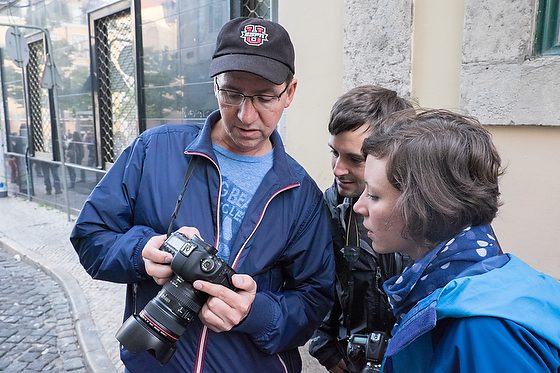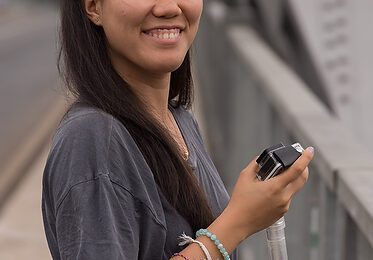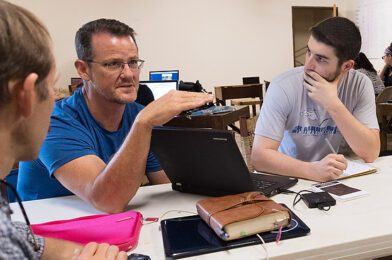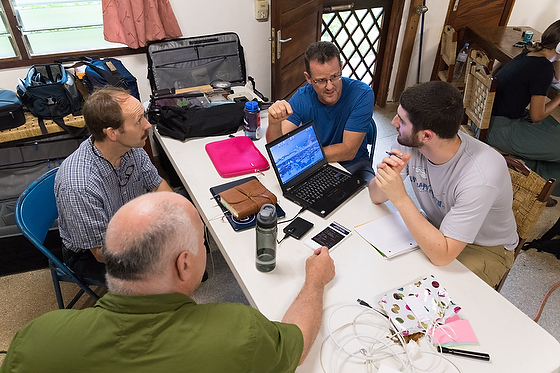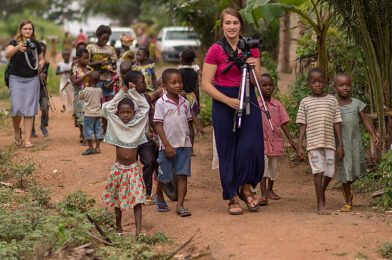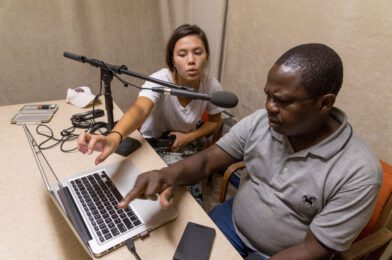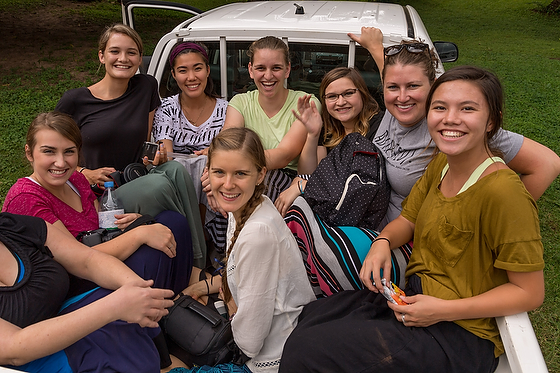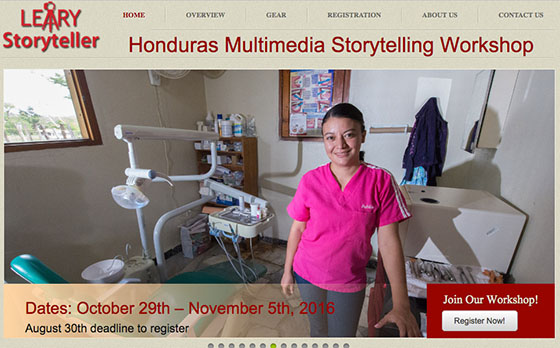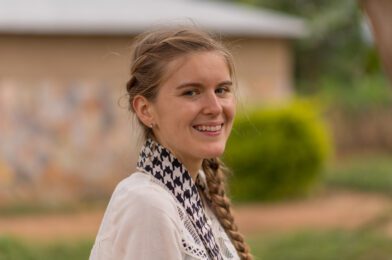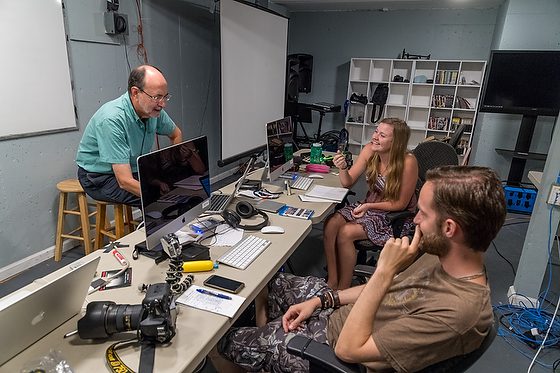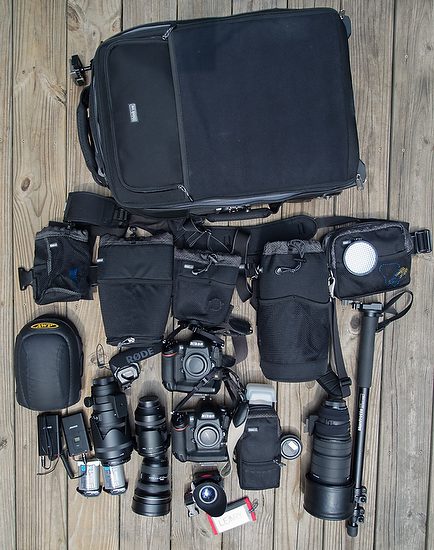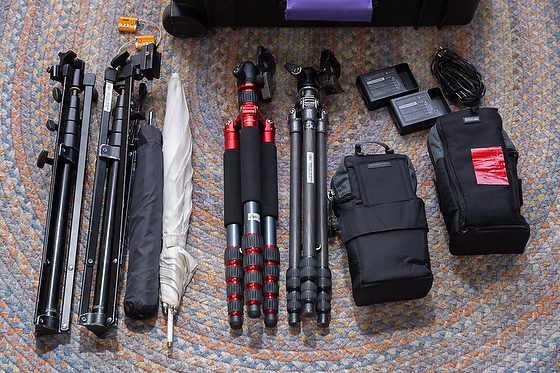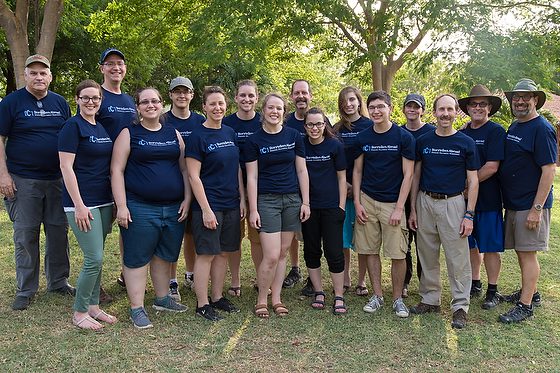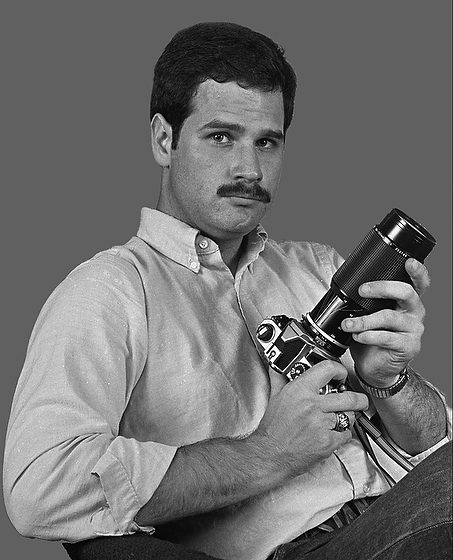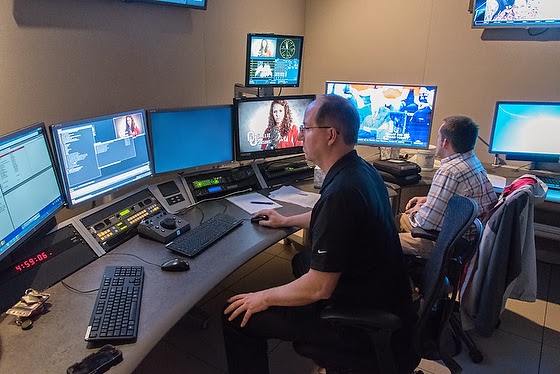| James Dockery, ESPN editor and co-teacher, is in Lisbon with me as we teach the students multimedia storytelling. [Fujifilm X-E2, FUJINON XF 18-55mm, ISO 6400, ƒ/6.4, 1/90] |
Each time I teach multimedia storytelling, I find myself sitting with the student and talking about what they could do better.
This summer, I taught in a program the same thing I teach in a workshop, but they needed to have a grade, which required me to write out those tips.
Here is the gist of what I am writing when grading or giving someone feedback on their first multimedia storytelling project.
Since this is the first time you have done multimedia storytelling and have few friends who have been through something like this, you may feel like you are flying blind at times.
When signing up for a course like this, I know most students have often talked to other alums of the classes and decided to take a class based on what those students told them.
These past experiences are to say that, for the most part, the only person helping you with this assignment would have been me. Needing help puts a lot more burden on you to ask more questions and push harder to grasp new concepts.
I saw through the class this grappling with storyline and storytelling. The storyline is the most challenging part of the content to master. If it were that easy to do, there would be blockbusters after another coming out of the studios worldwide.
One of the critical elements of this project is that the success of the project has a lot to do with how well you take ownership and control. Therefore, it requires leadership skills as well as the skills of the technician to capture the content.
You did a great job of adjusting from the first interview to the second time. You showed the concept well with what I call the “Radio Cut.” A “Radio Cut” is where you can close your eyes and listen and get the story as if you were listening to it on the radio.
One area I would encourage you to work on is what I call the peeling of the onion of the story. I thought you did a pretty good job peeling the onion and getting a deeper level than you had in the first round. I believe you will know how to get deeper faster with your subjects in time.
I think it is good to dig more profound because the more you can help the audience understand that this is a problem that is so difficult to overcome and needs a miracle to make it happen, the will not be as engaged.
 |
| Zacuto Z-Finder |
My advice on the technical side would be to get a viewfinder for your LCD. Many of your shots were slightly out of focus, which is typical if you cannot see the LCD up close.
Fill the 16×9 frame. Make it a cinema piece, and don’t use verticals where you see the black on the sides. Fill the frame.
I would also advise more variety in these shots as both video and stills.
- 25% Wide Shots – Establishing
- 25% Medium Shots
- 50% Close-ups
If you had more time with your subject, you could have shot a lot more and had more b-roll to use while he told us his story through the audio.
 |
| Nikon D4, Sigma 120-300mm f/2.8 DG OS HSM, Sigma 2x EX DG APO Autofocus Teleconverter, ISO 1400, ƒ/5.6, 1/2000 |
Another tip is to fill the screen with a b-roll when someone is talking about things in the past. B-roll is where abstract visuals can help you.
B-roll is where you may have what I call a video portrait of her that can help. For example, the subject is looking out a window, and you slowly move the camera, or it is on a tripod, and they might move just a little.
 |
| Fujifilm X-E2, FUJINON XF 55-200mm, ISO 6400, ƒ/4, 1/420 |
Another thing you could use is what I like to think as visual eye candy shots. Eye candy might be a close-up of water drops during rain hitting leaves. It could be a shot in a room as people walk through the photo. Where you rack focus in and out of focus on elements in your subject’s world. Things like a book, a flower on a table, tools he may use in the job, and something that, when used as a b-roll, is what you might see when daydreaming and looking out a window.
 |
| Nikon D5, Sigma 24-105mm f/4 DG OS HSM Art Lens, ISO 10000, ƒ/8, 1/100 |
For the non-journalistic piece, you can coach the talent/subjects. Their voices sounded the same even when they were talking about killing themselves or running a successful business. Their voices need to have a little more emotions than the same one. Most people need a little coaching and doing several takes until you capture the feeling of what they are saying is necessary. Just as good light can impact the mood of a photo, the tone of the person’s voice can bring mood and emotion to the storyline.
Sequencing needs to keep me on the edge of my seat. Meaning every 10 to 15 seconds, you need to create a little tension. Sometimes this is visual, and sometimes it is in their voices, the words, or something that makes it a page-turner.
Remember this from all that I taught on storytelling. Your clients, for the most part, do not know their stories well enough, or they don’t need you. Also, they don’t know how to take your content and put it together into something for their audience. They need you to take control, capture their stories, and put them into packages for their audience. They also need help with promoting their stories. So individual social media posts to drive people to the “story” are also required. Still, an image with a few words and pointing people to the project on Vimeo or YouTube can not just help the client promote their work but also give them ideas on how to promote their work.
Remember, you are not just telling their stories; you are educating them on how to say to them without you. They will take tips from the process and now be better speakers when they speak due to you helping them see the nuggets of their story. You will help them become more transparent so that, ultimately, their stories move an audience to action.

